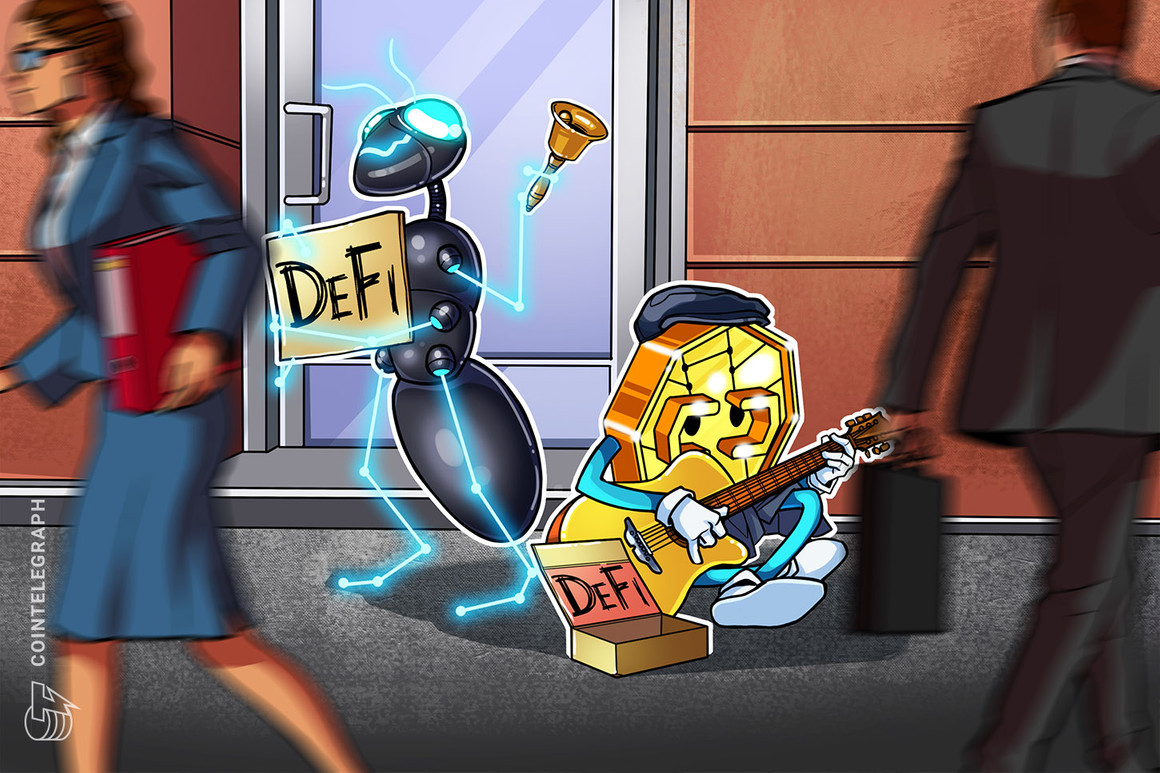Tokenomics aimed at financing worthless models, rampant hacks, and a lack of real-world utility have played

Tokenomics aimed at financing worthless models, rampant hacks, and a lack of real-world utility have played a role in the beleaguered crypto market’s decline.
Decentralized finance (DeFi) led cryptocurrency’s rapid growth in early 2021, but the crypto market has since plummeted in value. Global markets have played a role, but so has recklessness among developers when it comes to both cybersecurity and (often self-serving) inflationary token models.
Too much DeFi has been based on tokens minted from nothing or tokens that finance other tokens at high interest rates, with no part of the entire activity having any real underlying economic activity to back the yields offered.
Secondly, security issues, hacks and exploits of DeFi contracts and bridges have been widespread, and most notable DeFi platforms have suffered some form of exploit.
Related: Mass adoption will be terrible for crypto
Lastly, the lack of a uniform standard for defining DeFi contracts has limited DeFi to native smart contract platforms and tools, which also limits potential for growth, universal clients and, ultimately, adoption.
Despite these failures, DeFi is likely here to stay. But it will need to see changes and improvements to have true utility.
Too many unsustainable yields and too much ‘minting’
The DeFi summer of 2021 gave rise to several projects that promised yields that were not undergirded by any real economic activity. Some of the yields were at rates as high as 200%, and many were paid for by minting more of the same arbitrarily created tokens.

This arrangement essentially created a system that required an ever-increasing number of new users to create demand. The promised yields could only be sustained as long as new users were forthcoming. Eventually, several DeFi operations offering tokens with high yields suffered catastrophic failures (Terra, Voyager, Celsius and 3AC, to list a few). The future of DeFi will likely not lie in tokens that promise yields that are not sustained by true economic activity outside of minting tokens.
Cybersecurity has not been a priority
Another feature of the DeFi summer was the large number of projects that suffered from external and internal hacks of their reserves or users. Examples include the Ronin network, Polygon, Blizzard, Wormhole, Meter Bridge and, most recently, Binance Smart Chain (BSC). Some of the hacks illustrated weak security practices, to put it mildly.
Some projects lost a good portion of their reserves, and it took days or weeks before anyone noticed or disclosed a breach. And there were examples of protocols that were coded to move value without checking account balances. There were also examples of protocols undermined by developers that the operators apparently hired without fully validating their identities. These unfortunate incidents could prove to be learning experiences for the community.
Related: Coinbase is fighting back as the SEC closes in on Tornado Cash
Resorting to fundamental security practices such as independent system monitoring and alerts would be beneficial, in addition to more rigorous and careful vetting and development. DeFi projects that will prove successful in the future will be those that approach security in a more fundamental and principled way while learning from the issues and events of DeFi’s early days.
Redefine DeFi to finance real economic activity
One of the touted and expected benefits of blockchain technology is its potential to bring more of the unbanked and underbanked into the financial system. This represents a huge potential for the growth and upliftment of communities.
However, it has been a missed opportunity thus far. Much of DeFi has simply focused on financial products for those already in the crypto community by building those products around the borrowing, lending and shuffling of crypto tokens. DeFi’s maturation would be bolstered by addressing the aspirations of the underbanked in the real world.
Related: Throw your Bored Apes in the trash
Taking advantage of the ability to tokenize real-world items using similar standards as ERC-721 for nonfungible tokens (NFTs), “buy now, pay later” (BNPL) DeFi products are beginning to emerge. Some of these products are based on lending to finance tokenized real-world items such as smartphones as a work tool, and recently even mortgage financing.
The DeFi products are secured by those real-world items, able to accommodate a decentralized set of agents and customers, and are based on the actual yields achievable for such financial transactions. More products designed to underwrite real-world financial aspirations and address underbanked communities are likely to continue to emerge.
Develop a standard for representing DeFi contracts
Standards can be a significant catalyst for growth. The ERC-20 standard, for instance, helped the development of fungible tokens by…
cointelegraph.com
